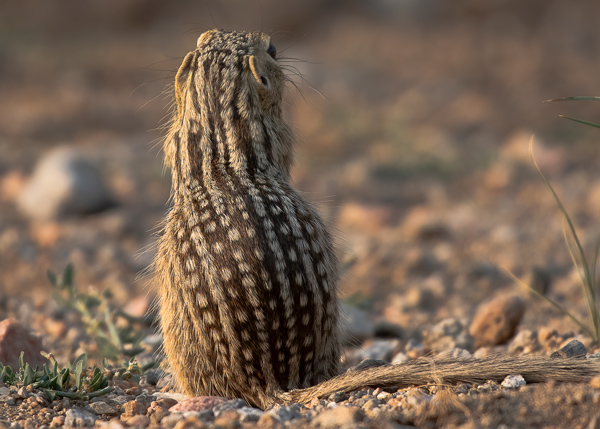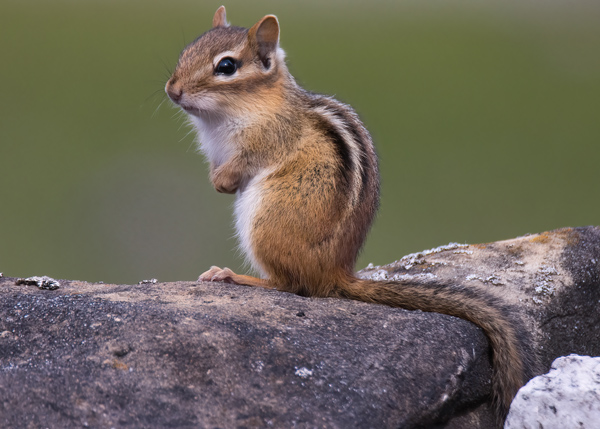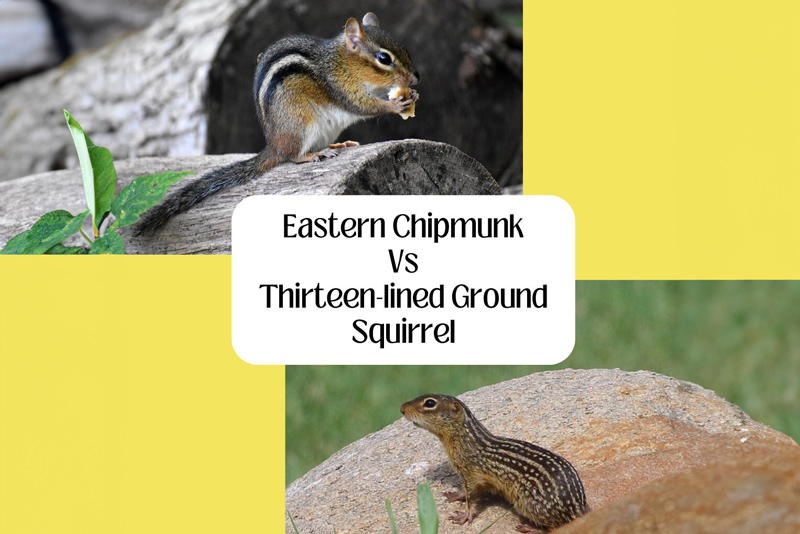Thirteen lined ground squirrels, as the name suggests, display thirteen lines of alternating spots and stripes across their back and sides. This differs from chipmunks who have stripes along their sides but have solid brown fur on their backs. Chipmunks are also a bit smaller than the ground squirrels, averaging 8-10 inches long (including the tail) where ground squirrels average 11 inches. Head to body proportions are also a bit different: chipmunks have larger heads and larger ears in relation to their bodies.


Habitat:
These two small mammals both burrow, creating deep channels underground to nest in. Thirteen lined ground squirrels can be found in grassy, prairie habitats like meadows, pastures, and fields. On the other hand, chipmunks prefer more covered, woodland areas. They are prevalent in forests as well as residential spaces.
Behavior:
While both species hibernate, chipmunks do not undergo deep hibernation like thirteen lined ground squirrels do. This means chipmunks may be active on warm winter days when the ground squirrels are still fast asleep. In late March when they emerge from their burrows, both species will begin to mate. Additionally, both chipmunks and ground squirrels are diurnal, meaning they are active during the day and sleep through the night.
Written by Emlyn Yoon-Buck, 2024 summer intern

